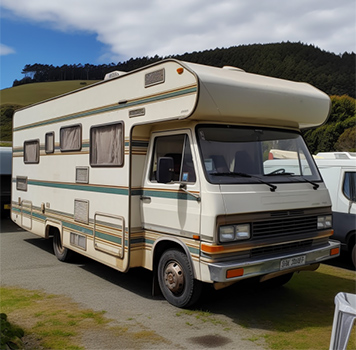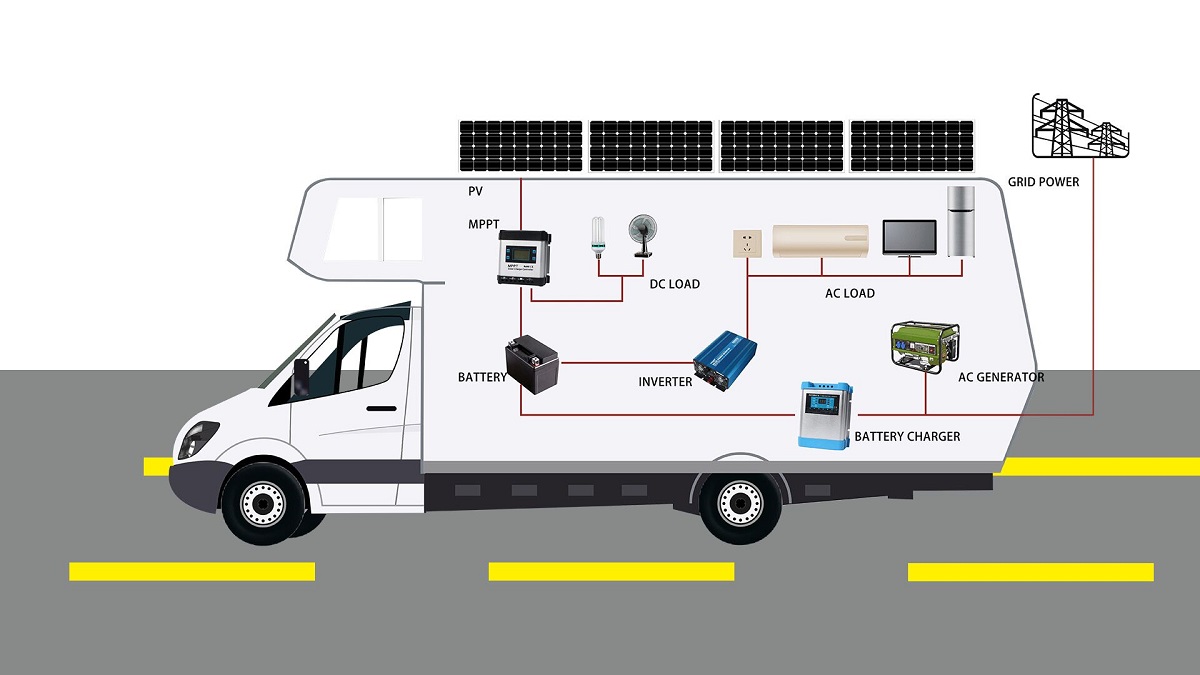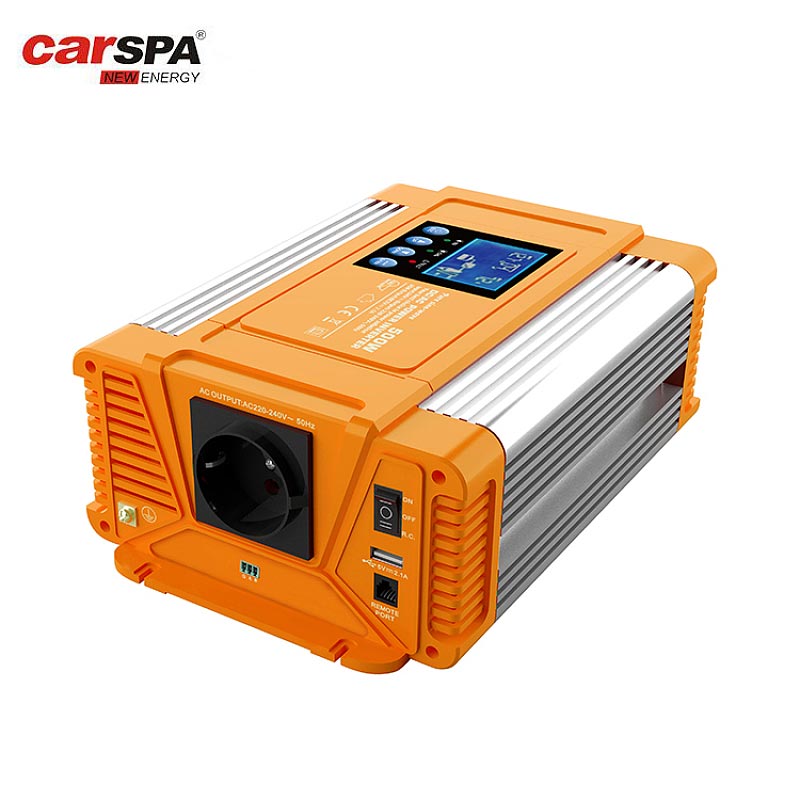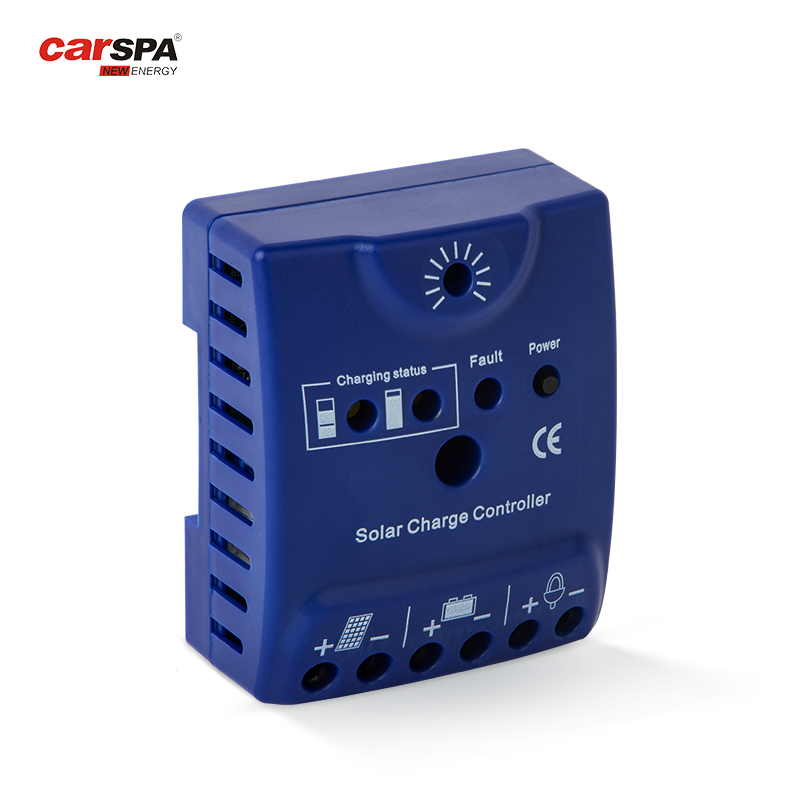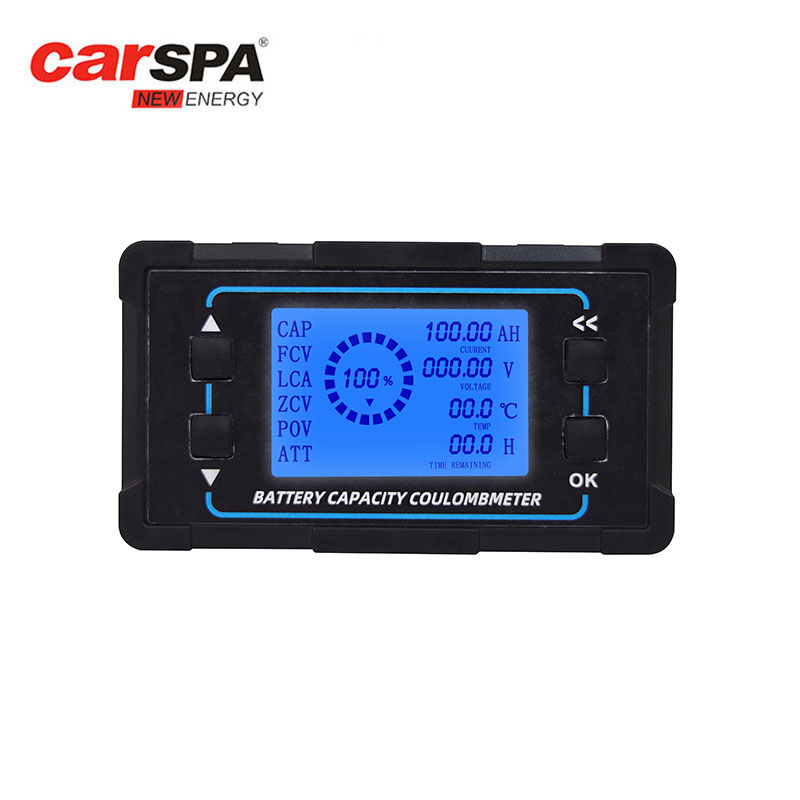Components of a Solar Power System for Camper Van:
Solar Panels: Solar panels are the primary component of any solar power system. They convert sunlight into electricity and come in a variety of sizes and types.
Mounting Hardware: Mounting hardware is used to secure the solar panels to the roof of the camper van. This can include brackets, rails, and screws.
Wiring: Wiring is needed to connect the solar panels to the rest of the system. This includes both DC wiring between the panels and charge controller, as well as AC wiring for the inverter.
Battery Bank: A battery bank is used to store the energy generated by the solar panels. This can be a single battery or a bank of several batteries wired in parallel.
Inverter: An inverter is used to convert the DC power stored in the battery bank into AC power that can be used to power appliances and electronics in the camper van.
Solar Charge Controller: A solar charge controller regulates the charging of the battery bank from the solar panels. It prevents overcharging and protects the battery bank from damage.
Functions of Inverter and Solar Charge Controller in Camper Van Solar Power System:
Inverter: The inverter is a crucial component of the solar power system in a camper van because it converts the DC power stored in the battery bank into AC power that can be used to power appliances and electronics in the van. Without an inverter, the energy stored in the battery bank would be unusable.
Solar Charge Controller: The solar charge controller is responsible for regulating the charging of the battery bank from the solar panels. It prevents overcharging, which can damage the batteries, and ensures that the batteries are charged efficiently. Additionally, some charge controllers have built-in features like load control, which can automatically disconnect loads that exceed the capacity of the battery bank.

